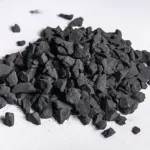Correcting diastasis recti and hernias together with specialized surgical techniques, including mesh repair, results in better outcomes with long-term muscle re-approximation. Simultaneously addressing diastasis recti and abdominal wall hernias reduces risk of future herniation or recurrence.
Correcting Diastasis Recti and Hernias Together
In 2024, the most advanced approach is having an experienced surgeon fix diastasis recti and hernias in one procedure. This spares patients from multiple surgeries. Combining the operations allows for tighter abdominal wall closure utilizing sutures and mesh reinforcement. This reconstructs the midline, brings the abs back together, and provides additional support to prevent future protrusions or openings. Recovery also goes smoother without undergoing two separate major surgeries. Patients are typically back to daily activities within 2-4 weeks with long-term satisfaction.
Non-Surgical Diastasis Recti Treatments
Conservative treatments for diastasis recti include pelvic floor physical therapy, postural training, abdominal braces and exercise programs that target the inner abs without strain. Physical therapists help retrain coordination between the diaphragm, abs and pelvic floor muscles using techniques like belly breathing. Custom-fit splints are also available to wear during exercise or all day to help support and bring tissues back together. Avoiding activities, like sit ups, that increase intra-abdominal pressure is key during recovery. Pilates and yoga poses designed for closing the gap between abs are gentle ways to strengthen the muscles without worsening diastasis recti. While non-surgical approaches may help some cases, moderate to wide gaps often require surgery.
Diastasis Recti Surgery Techniques and Results
This includes less scarring, shorter recovery times and less postoperative pain or restrictions. Both robotic surgery and endoscopic minimally invasive surgery are revolutionizing diastasis recti corrections. These state-of-the-art procedures use specialized cameras and instruments to reconstruct the linea alba ligament between the left and right abs through small punctures rather than long cuts. Mesh can also be introduced this way to reinforce and prevent future stretching or bulging outward.
Pros And Cons of Diastasis Recti Before and After
Here are some pros and cons of treating Diastasis Recti Before and After:
Pros of Treating Diastasis Recti:
Alleviates back pain and posture issues caused by lack of core muscle support
Reduces risk of hernias since the abdominal wall is repaired
Restores muscle strength and function in the abs
Resolves or improves urinary incontinence and pelvic floor problems
Normalizes intra-abdominal pressure to aid digestion and bowel function
Repairs stretched nerves and connective tissue between the abs
Eliminates bulging of organs/tissue through the separated abdominal muscles
Restores a flatter stomach and tighter waistline contour
Boosts self-confidence with improvement in aesthetic appearance
Allows return to core workouts and heavier lifting when muscles have healed
Shorter recovery times with less invasive, minimally invasive surgical options
Cons of Treating Diastasis Recti:
Surgery has typical risks like bleeding, infection, reactions to anesthesia
Invasive procedures involve significant recovery times, especially with open surgery
Results may not meet unrealistic expectations regarding loose skin or stretch marks
Some cases may not have fully improved functional ability of core muscles
Hernias may still occur years later if there is progressive loss of muscle integrity
relapse is possible if core muscles are re-overstretched by pregnancy, weight gain, etc
Conservative treatment takes dedication to months of modified activity and training
Specialized braces, physical therapy and treatments may not be covered by insurance
Full correction sometimes requires multiple procedures over time if using a staged approach
Conclusion
In 2024, patients with diastasis recti have better treatment options than ever before. Working with a knowledgeable specialist is key to determining the appropriate route for repair, whether that involves surgery, more conservative measures or a combination approach. The future looks bright when it comes to resolving this common postpartum condition and restoring strength and function to the core abdominal muscles.
FAQs of diastasis recti before and after
What are the treatment options for diastasis recti?
Nonsurgical treatments include physical therapy exercises to strengthen core muscles, use of a belly binder or brace for support, and avoiding exercises that strain the abs. Some women recover naturally after pregnancy. Surgery like abdominoplasty may be done in severe, chronic cases to close the gap and tighten muscle and skin.
Can men get diastasis recti too?
Yes, diastasis recti also occurs in men. Weightlifting, cortisone injections, and prior abdominal surgeries can increase risk.
Does diastasis recti go away on its own?
After pregnancy, diastasis recti may spontaneously recover within 8 weeks. Staying active, watching core strength and not straining the abs can help tissues heal together faster. More severe muscle separation of 2.7 cm or greater typically requires proactive treatment to close.







